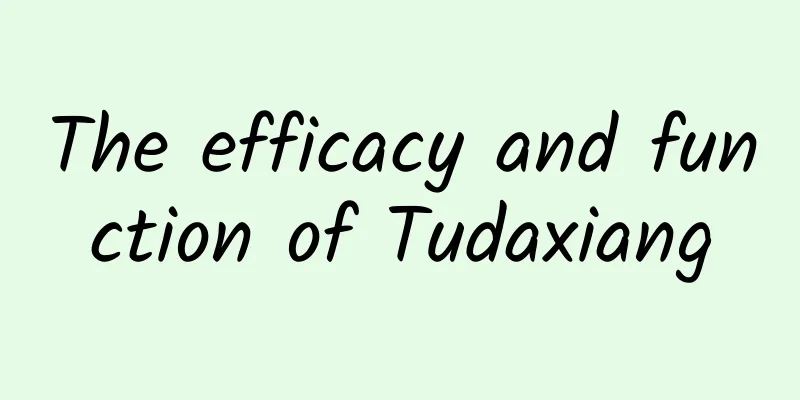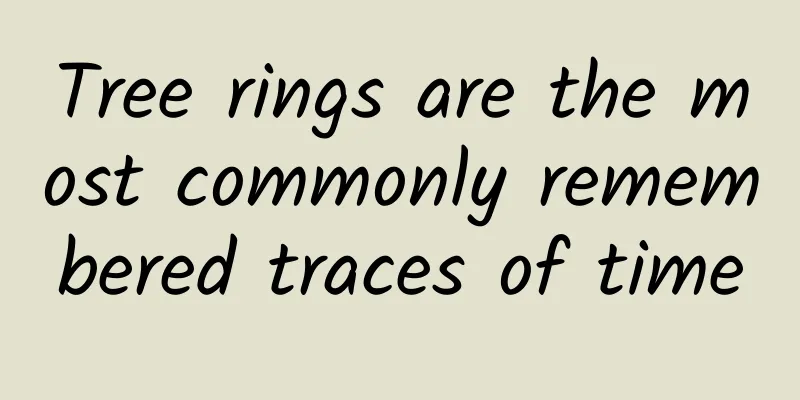The efficacy and function of Tudaxiang

|
With the development of society and the close international exchanges, most people who study medicine have been seriously influenced by Western medicine, and fewer and fewer people are studying Chinese medicine, which has resulted in less and less understanding of Chinese medicine. Let’s talk about the efficacy and functions of the traditional Chinese medicine Tudaxiang. [Other name] Yunnan fennel [Source] Medicinal material source: The ripe fruit or leaves of Illicium verum L. of the Illicium family. [Original form] Evergreen small tree or shrub, up to 10m tall. The young branches are slightly ridged and light brown. There is often a terminal bud, with bud scales arranged in a shingle-like manner and usually falling off early. Leaves are leathery, alternate or nearly opposite, rarely in clusters of 3-5; leaf blades are oblong-elliptic to lanceolate, 5-10cm long, 1.5-3cm wide, with short acuminate apex, base gradually narrowed into a cuneate shape, midrib concave above and raised below. The flowers are borne in the axils of branches and leaves, are green-yellow or light yellow, with extremely short pedicels, 2-8mm long; there are 18-23 tepals, the largest of which is membranous, oblong-lanceolate to tongue-shaped, 9-15mm long and 2-4mm wide; there are 16-28 stamens; there are 8-13 carpels, and the style is subulate. Follicles 8-13, 1.1-2cm long, 6-9mm wide, with a long pointed tip, often curved. Seeds gray-brown. The flowering period is May and the fruit ripening period is September. [Habitat distribution] Ecological environment: Growing in moist valleys, stream valleys, mixed woods and roadsides at an altitude of 1300-4000m, and there are also small patches of pure forests. [Chemical composition] The fruit contains anisatin, shikimic acid, 2-oxo-6-deoxy-neoanisatin. The fruit contains about 1% volatile oil, the main component of which is limonene, accounting for 73.42%. It also contains 46 ingredients including α-pinene, cam-phene, α-phellandrene, etc. [Toxicity] The fruit contains shikimotoxin, and the LD50 of intraperitoneal injection in mice is 0.76±0.06mg/kg. The fruit contains a new sesquiterpene lactone named 2-oxo-6-deoxyneoshikimotoxin, and the LD50 of intraperitoneal injection in mice is 0.94±0.07mg/kg. 【Nature and flavor】 Pungent; hot; highly toxic 【Functions and indications】 Promotes tissue regeneration and kills insects. Mainly used for long-term ulcers and scabies 【Usage and Dosage】 For external use: take appropriate amount, grind into powder and apply on the affected area; or decoct in water for washing. 【Note】 Do not take internally. 【Excerpt】 Chinese Materia Medica Nowadays, people's life pressure is constantly increasing, which makes our bodies often in a state of fatigue. As a traditional Chinese medicine, Tudaxiang has a certain regulating effect on the body. I hope it will be helpful to everyone. |
<<: The efficacy and function of bald tea
>>: The efficacy and function of horse mane
Recommend
In Poyang Lake, rotifers create 133 trillion plastic particles every day
The total number of nanoplastic particles produce...
Dandelion soaked in water can actually cure diseases
In daily life, dandelion is a relatively common p...
Are mugwort and wormwood the same?
Artemisia white is a species of Artemisia grandis...
The efficacy and function of the three guns
Sanzhiqiang is a very good medicinal herb. It is ...
This kind of shrimp, which is meatier than shrimp skin, is being caught more and more? Antarctic krill: I'm laying my cards on the table
When it comes to shrimp, the first thing that com...
The efficacy and function of white chrysanthemum root
White chrysanthemum root is a kind of traditional...
What are the precautions when consuming wild pine pollen?
Nowadays, environmental pressure is getting great...
The efficacy and function of single pepper
Single pepper is a kind of Chinese herbal medicin...
Zheng He did this for this group of people when he came back from his first voyage to the West...
...
Lose weight, reduce carbon emissions, save money! This is a good thing that kills three birds with one stone, you definitely don’t know
Do you lack motivation to lose weight? What if lo...
Don’t be scared by them when you visit the night market on National Day…
During the National Day holiday, no matter which ...
Will a person be woken up by the urge to urinate during sleep? Will the bladder be ruptured by the urge to urinate?
Getting up every morning is a difficult thing for...
The efficacy and function of Polygala arborescens
Polygala tenuifolia is a common Chinese medicine ...
Can you eat orchid seeds?
You may not have heard of orchid seeds, but frien...
The efficacy and function of eagle claw maple
Do you know hawk claw maple? It is a common Chine...









